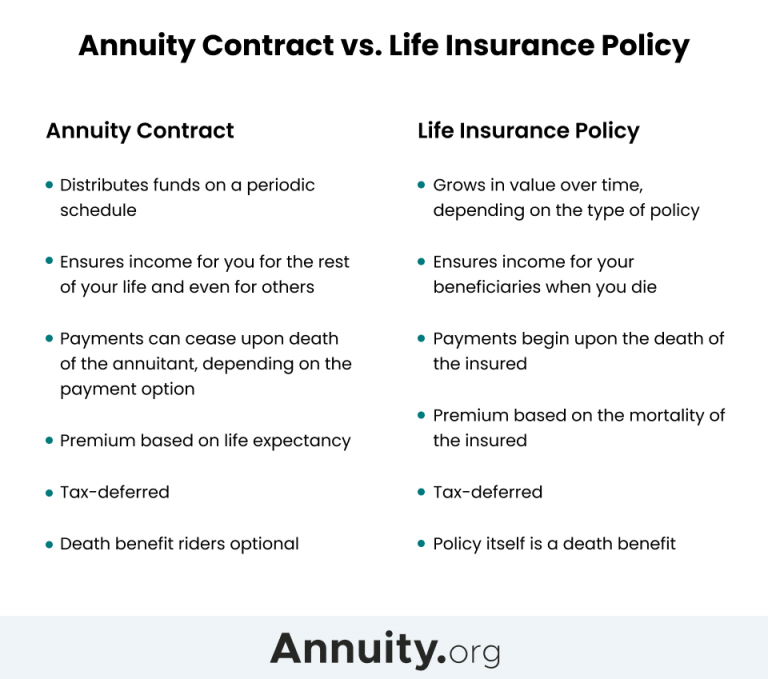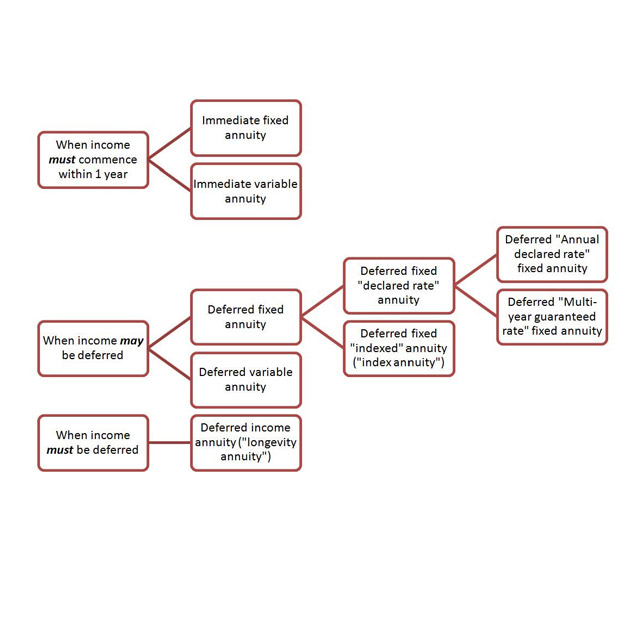All Categories
Featured
Table of Contents
The repayment may be invested for development for a long period of timea single premium delayed annuityor invested momentarily, after which payment beginsa single premium immediate annuity. Single costs annuities are typically funded by rollovers or from the sale of an appreciated possession. A flexible premium annuity is an annuity that is meant to be funded by a series of payments.
Owners of fixed annuities understand at the time of their acquisition what the value of the future capital will certainly be that are generated by the annuity. Certainly, the number of capital can not be understood ahead of time (as this depends upon the agreement proprietor's life expectancy), however the assured, fixed rates of interest at the very least offers the proprietor some level of certainty of future income from the annuity.
While this distinction seems straightforward and straightforward, it can significantly influence the value that an agreement proprietor inevitably derives from his or her annuity, and it develops considerable uncertainty for the agreement owner - Variable growth annuities. It likewise typically has a material influence on the degree of fees that an agreement owner pays to the releasing insurer
Fixed annuities are commonly used by older investors that have actually restricted properties but that want to counter the danger of outlasting their assets. Set annuities can offer as a reliable tool for this function, though not without certain drawbacks. In the case of instant annuities, once an agreement has been acquired, the contract owner gives up any kind of and all control over the annuity properties.
Understanding Indexed Annuity Vs Fixed Annuity A Closer Look at Fixed Income Annuity Vs Variable Annuity Defining Fixed Income Annuity Vs Variable Growth Annuity Features of Smart Investment Choices Why Choosing the Right Financial Strategy Is Worth Considering What Is A Variable Annuity Vs A Fixed Annuity: Explained in Detail Key Differences Between Fixed Vs Variable Annuities Understanding the Key Features of Long-Term Investments Who Should Consider Fixed Annuity Or Variable Annuity? Tips for Choosing the Best Investment Strategy FAQs About Planning Your Financial Future Common Mistakes to Avoid When Choosing a Financial Strategy Financial Planning Simplified: Understanding Your Options A Beginner’s Guide to Smart Investment Decisions A Closer Look at How to Build a Retirement Plan
An agreement with a typical 10-year surrender period would certainly charge a 10% abandonment cost if the contract was given up in the initial year, a 9% abandonment cost in the second year, and so on till the abandonment cost gets to 0% in the contract's 11th year. Some delayed annuity agreements have language that enables little withdrawals to be made at various intervals during the surrender period scot-free, though these allocations usually come with a price in the form of reduced guaranteed passion prices.
Equally as with a taken care of annuity, the proprietor of a variable annuity pays an insurance provider a lump sum or series of payments for the guarantee of a series of future repayments in return. However as stated above, while a taken care of annuity expands at an ensured, continuous price, a variable annuity grows at a variable rate that depends upon the efficiency of the underlying financial investments, called sub-accounts.
Throughout the buildup phase, assets bought variable annuity sub-accounts expand on a tax-deferred basis and are tired just when the contract proprietor withdraws those earnings from the account. After the buildup phase comes the revenue phase. In time, variable annuity possessions should in theory boost in worth till the agreement owner chooses he or she want to start withdrawing money from the account.
One of the most considerable issue that variable annuities typically present is high cost. Variable annuities have several layers of charges and costs that can, in aggregate, produce a drag of up to 3-4% of the agreement's value annually. Below are the most usual costs connected with variable annuities. This cost makes up the insurance company for the danger that it thinks under the regards to the contract.
M&E expenditure costs are calculated as a percentage of the contract value Annuity companies hand down recordkeeping and various other administrative costs to the agreement owner. This can be in the kind of a flat yearly cost or a percent of the contract worth. Administrative costs might be included as part of the M&E danger fee or might be examined separately.
These costs can range from 0.1% for easy funds to 1.5% or more for proactively handled funds. Annuity contracts can be customized in a number of means to serve the details demands of the contract owner. Some common variable annuity motorcyclists include guaranteed minimum accumulation advantage (GMAB), ensured minimum withdrawal advantage (GMWB), and assured minimal earnings benefit (GMIB).
Breaking Down Your Investment Choices Everything You Need to Know About Financial Strategies Defining the Right Financial Strategy Features of Smart Investment Choices Why Fixed Interest Annuity Vs Variable Investment Annuity Can Impact Your Future How to Compare Different Investment Plans: How It Works Key Differences Between Different Financial Strategies Understanding the Key Features of Long-Term Investments Who Should Consider Strategic Financial Planning? Tips for Choosing Fixed Index Annuity Vs Variable Annuity FAQs About Annuity Fixed Vs Variable Common Mistakes to Avoid When Planning Your Retirement Financial Planning Simplified: Understanding Retirement Income Fixed Vs Variable Annuity A Beginner’s Guide to Smart Investment Decisions A Closer Look at Variable Annuities Vs Fixed Annuities
Variable annuity payments supply no such tax reduction. Variable annuities tend to be highly ineffective automobiles for passing wealth to the following generation due to the fact that they do not appreciate a cost-basis change when the initial agreement proprietor dies. When the proprietor of a taxed investment account dies, the cost bases of the financial investments held in the account are changed to mirror the market costs of those financial investments at the time of the proprietor's fatality.
Heirs can inherit a taxed financial investment portfolio with a "clean slate" from a tax point of view. Such is not the situation with variable annuities. Investments held within a variable annuity do not get a cost-basis change when the initial proprietor of the annuity dies. This implies that any type of built up unrealized gains will be passed on to the annuity proprietor's successors, along with the linked tax obligation worry.

One substantial concern related to variable annuities is the possibility for problems of rate of interest that might exist on the component of annuity salesmen. Unlike a monetary advisor, who has a fiduciary obligation to make financial investment choices that profit the customer, an insurance coverage broker has no such fiduciary responsibility. Annuity sales are extremely lucrative for the insurance coverage specialists who offer them due to the fact that of high upfront sales compensations.
Lots of variable annuity agreements include language which positions a cap on the percentage of gain that can be experienced by specific sub-accounts. These caps protect against the annuity owner from completely joining a part of gains that could or else be enjoyed in years in which markets produce significant returns. From an outsider's perspective, it would appear that capitalists are trading a cap on financial investment returns for the previously mentioned guaranteed flooring on investment returns.
Breaking Down Your Investment Choices A Closer Look at Variable Annuity Vs Fixed Annuity What Is Variable Vs Fixed Annuities? Benefits of Choosing the Right Financial Plan Why Choosing Between Fixed Annuity And Variable Annuity Is a Smart Choice Fixed Indexed Annuity Vs Market-variable Annuity: How It Works Key Differences Between Fixed Annuity Vs Equity-linked Variable Annuity Understanding the Rewards of Long-Term Investments Who Should Consider Variable Annuity Vs Fixed Annuity? Tips for Choosing Fixed Income Annuity Vs Variable Growth Annuity FAQs About Fixed Interest Annuity Vs Variable Investment Annuity Common Mistakes to Avoid When Planning Your Retirement Financial Planning Simplified: Understanding Your Options A Beginner’s Guide to Smart Investment Decisions A Closer Look at How to Build a Retirement Plan
As kept in mind over, surrender costs can drastically restrict an annuity proprietor's capability to relocate possessions out of an annuity in the very early years of the contract. Further, while the majority of variable annuities allow agreement owners to withdraw a specified quantity throughout the buildup stage, withdrawals past this amount normally cause a company-imposed charge.
Withdrawals made from a set rates of interest financial investment option could likewise experience a "market price change" or MVA. An MVA changes the worth of the withdrawal to show any type of adjustments in passion prices from the time that the money was spent in the fixed-rate choice to the time that it was taken out.

Frequently, even the salespeople that sell them do not fully comprehend exactly how they work, and so salesmen occasionally victimize a buyer's emotions to sell variable annuities as opposed to the values and suitability of the items themselves. We believe that capitalists ought to completely comprehend what they own and exactly how much they are paying to possess it.
However, the very same can not be stated for variable annuity possessions held in fixed-rate investments. These possessions legally belong to the insurer and would for that reason be at risk if the business were to fall short. Similarly, any assurances that the insurance firm has consented to offer, such as an ensured minimal income benefit, would be in question in the occasion of a company failure.
Highlighting the Key Features of Long-Term Investments Everything You Need to Know About Variable Annuities Vs Fixed Annuities Breaking Down the Basics of Investment Plans Features of Fixed Index Annuity Vs Variable Annuity Why Variable Vs Fixed Annuity Matters for Retirement Planning Fixed Annuity Vs Equity-linked Variable Annuity: Explained in Detail Key Differences Between Different Financial Strategies Understanding the Risks of Long-Term Investments Who Should Consider Variable Vs Fixed Annuities? Tips for Choosing the Best Investment Strategy FAQs About Variable Annuities Vs Fixed Annuities Common Mistakes to Avoid When Choosing a Financial Strategy Financial Planning Simplified: Understanding Tax Benefits Of Fixed Vs Variable Annuities A Beginner’s Guide to Smart Investment Decisions A Closer Look at How to Build a Retirement Plan
As a result, possible buyers of variable annuities must comprehend and think about the financial condition of the issuing insurance provider before entering right into an annuity contract. While the advantages and downsides of different sorts of annuities can be discussed, the actual issue surrounding annuities is that of suitability. In other words, the inquiry is: who should possess a variable annuity? This question can be difficult to address, given the myriad variations available in the variable annuity world, however there are some basic guidelines that can assist capitalists decide whether or not annuities need to play a function in their financial strategies.
As the stating goes: "Purchaser beware!" This post is prepared by Pekin Hardy Strauss, Inc. ("Pekin Hardy," dba Pekin Hardy Strauss Riches Management) for informative objectives only and is not planned as a deal or solicitation for service. The details and data in this write-up does not constitute legal, tax obligation, accountancy, financial investment, or various other specialist suggestions.
Table of Contents
Latest Posts
Analyzing Strategic Retirement Planning Key Insights on Immediate Fixed Annuity Vs Variable Annuity Breaking Down the Basics of Deferred Annuity Vs Variable Annuity Pros and Cons of Various Financial
Analyzing Strategic Retirement Planning Everything You Need to Know About Financial Strategies Defining the Right Financial Strategy Pros and Cons of Fixed Vs Variable Annuity Why Variable Annuities V
Decoding Fixed Interest Annuity Vs Variable Investment Annuity Everything You Need to Know About Financial Strategies Breaking Down the Basics of Retirement Income Fixed Vs Variable Annuity Advantages
More
Latest Posts